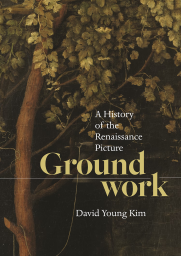
Habilitation, University of Zurich, 2024
PhD, Harvard University, 2009
MA, Harvard University, 2009
BA, Amherst College, 1999
BIOGRAPHY
The red thread in much of my work is the special attention I pay to art theoretical writing and the confrontation of images and texts, and beyond that, to the mechanics of language as the art historian’s primary tool. The questions that organize my thinking include: how does writing frame engagement with the work of art, and by extension, how is the world able to disclose itself to the linguistic self—or selves—through art?
Given the capaciousness of language as an art historical medium, I have an admittedly eclectic range of research and teaching interests, from Italian “Renaissance” painting, to colonial “Latin American” visual culture, to art historiography, where these categories of periodization and geography were first formulated, and debated. On this score, I have become increasingly attentive to the history, politics, and possibilities of formalism in art history in addition to theories of language and translation.
More recently, I have been experimenting with developing ideas in another form—the film essay—outside the art historian’s traditional purview. Film offers another means of thinking through and with the material, in the same way that attention to language in art historical analysis leads to engagement with the language of art historiography. Through these experimental films, I explore what a largely visual expressive mode can contribute to thinking about visual art through a fundamentally nonverbal medium.
CURRENT RESEARCH AND TEACHING
My current project, supported by membership at the Institute for Advanced Study (IAS), is entitled Lives Found in Translation: Giorgio Vasari in Korea. This book examines modern translations of Giorgio Vasari's Lives of the Most Excellent Painters, Sculptors, and Architects (1550/1568) into the Korean language alongside renderings of this canonical work in German and Portuguese. These translations are flashpoints in an exploratory historiography of Renaissance art which resists the monodic notions of nationality, race, and ethnicity underpinning the field’s organizational structures and modes of self-representation. The debates in Korean, German, and Portuguese scholarship about the rendering of key lexical terms in Renaissance art theory which are highly resistant to translation demonstrate language (from phoneme to word to accent) to be one of the most contested terrains of art history. This project furthermore critiques specific neoliberal dimensions of “global art history” even as it offers a collective vision of an art historical practice inclusive of its diverse practitioners.
I was born in the United States to Northern Korean immigrants to São Paulo: coming to terms with this family history of transnational migration has led me to develop a secondary teaching and research field in the global art of the Lusophone world, with emphasis on the messianic thought of the Baroque theologian Antonio Vieira and the reception of his ideas during the military dictatorship in Brazil in the twentieth century.
RECENT WORK
Named a Best Book of the Year by ArtForum International and shortlisted for the Apollo Book of the Year Award, Groundwork: A History of the Renaissance Picture (Princeton University Press, 2022) examines the relatively underexamined and undertheorized compositional element of the “ground” in Renaissance painting. As I argue through reference to period craft treatises and art literature, “ground” can refer to the preparation of a work’s surface, the fictive floor or plane, or the background on which figuration occurs. In laying the material foundation, artists perform what I call “groundwork,” that is opening the ground as a zone that can precede, penetrate, or fracture the figure. Just as groundwork establishes the material conditions for the figure to emerge in the picture, so too does this groundwork extend and elaborate the body’s contingent stance in pictorial composition. In developing this book, I co-directed the film essay The Desert and the Lagoon, which has been screened at a number of universities and art institutes in North America, Italy, and the United Kingdom. The film essay as a genre allows development about ideas about visuality through a fundamental visual tool of analysis.





